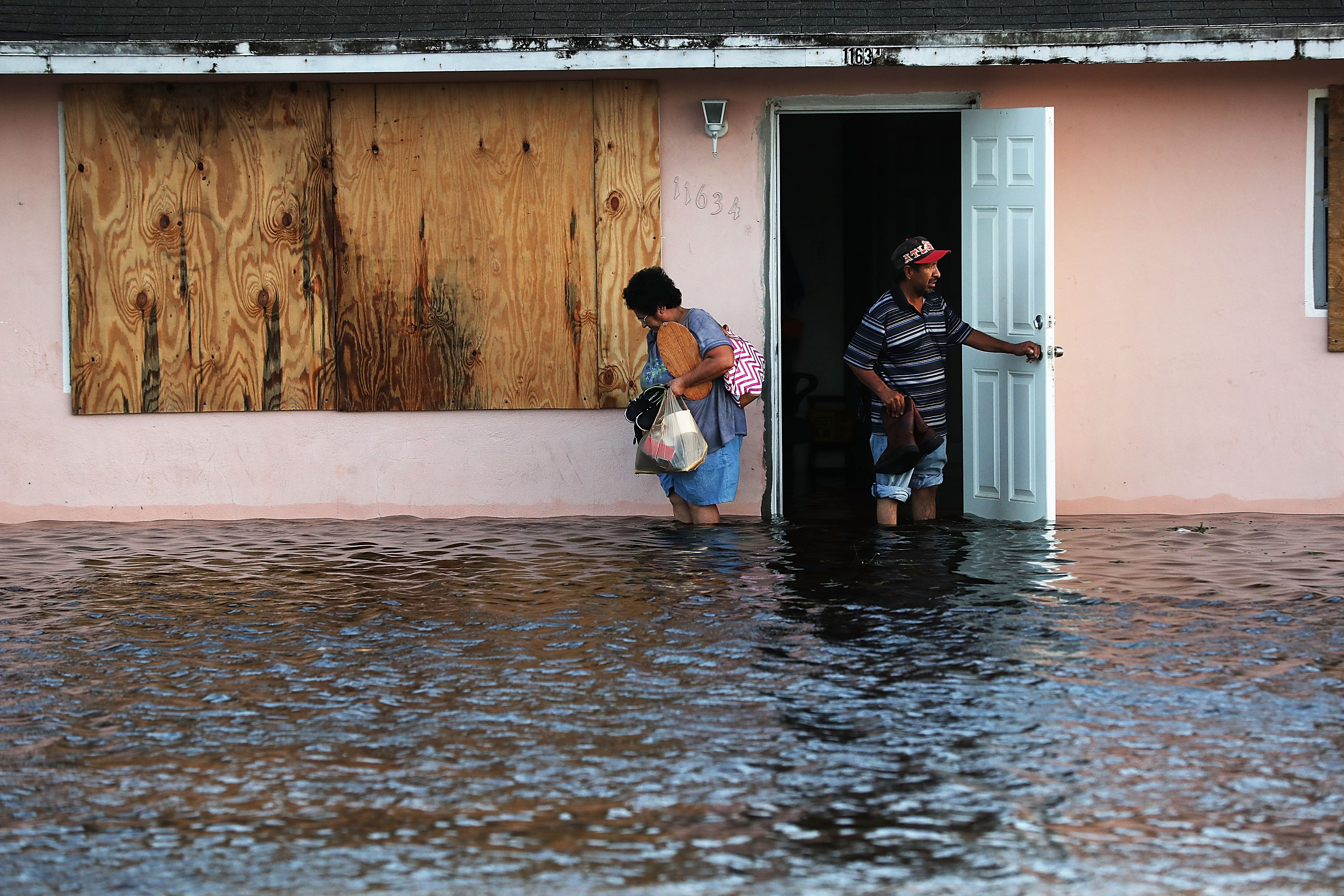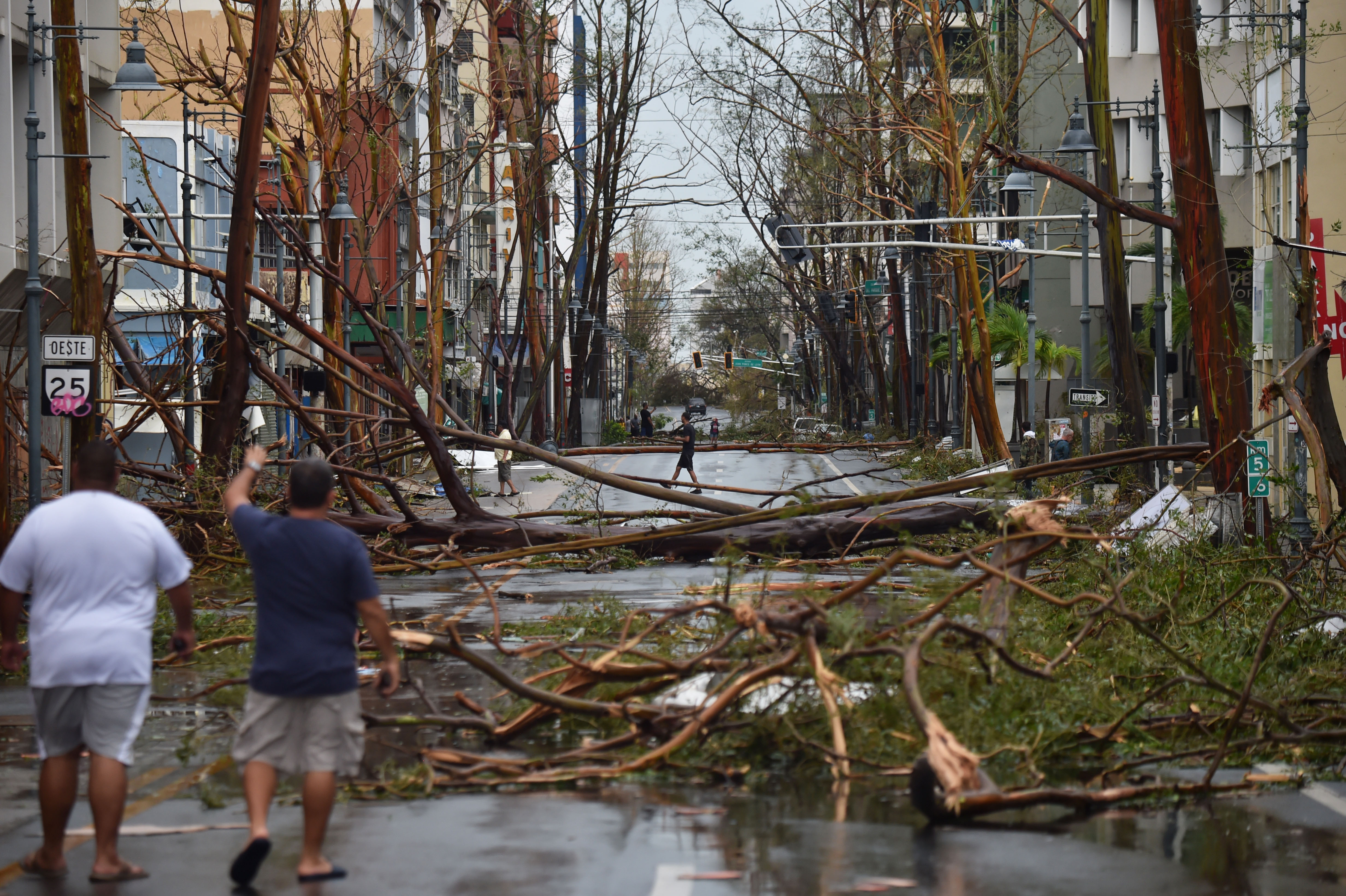
(Photo: Spencer Platt/Getty Images)
The Atlantic hurricane season officially begins June 1st, but the first named storm of the season already made landfall in the United States on Memorial Day. Subtropical Storm Alberto didn’t strengthen into a full-blown hurricane, but governors in Florida, Mississippi, and Alabama declared states of emergency over the weekend to prepare for potential flooding from heavy rain and storm surge.
This morning, I have declared a state of emergency across FL to ensure our state has the resources they need to keep their families safe and prepare for the torrential rain and severe flooding Subtropical Storm Alberto will bring. https://t.co/8yK1qdB5eD
— Rick Scott (@SenRickScott) May 26, 2018
Experts expect over a dozen more storms with sustained speeds of 40 mph—the minimum requirement for a storm to get a name—to form during this year’s hurricane season, which lasts through November 30th. According to the National Oceanic and Atmospheric Administration, five to nine of them will reach hurricane strength and four could become major hurricanes. Many U.S. cities and states are bracing for another above-average season as they’re still recovering from last year’s historic hurricane season.
Florida
Alberto slammed into Florida on Monday, less than nine months after Hurricane Irma hit the state as a Category 4 storm. The strongest hurricane on record to develop in the open Atlantic Ocean, Irma kicked off the largest evacuation in state history and left millions without power; the wind damage alone cost the state an estimated $19.4 billion.
Since last year, the Florida legislature has passed several spending measures to help the state recover from Irma and prepare for future storms, providing money for beach and agriculture industry repairs, federal disaster recovery grants, assistance for students from Puerto Rico and the Virgin Islands displaced by the storm, and a new emergency operations center in the Keys. Lawmakers also passed new rules requiring nursing homes and assisted-living facilities to have generators on hand, after 14 nursing-home residents across the state died when the facilities’ air conditioning systems failed. The rules take effect June 1st.
The Florida Keys, where over 4,100 homes were severely damaged or destroyed by the storm, are still struggling to recover. Monroe County, for example, spent nearly all of its emergency reserves on Hurricane Irma, and had to take a $40 million line of credit to cover recovery efforts. The county has asked for nearly $35 million in reimbursement from the Federal Emergency Management Agency. As of mid-May, over 160 households were still living in temporary FEMA trailers or on FEMA-leased property, and the county had received only $604,000 from the state’s FEMA funds—which means the county remains tapped out as a new hurricane season begins.
Puerto Rico

(Photo: Hector Retamal/Getty Images)
The U.S. territory was hit particularly hard last year. Hurricane Irma grazed the island in early September, and over 70,000 residents were still without power when Hurricane Maria, a Category 5 storm, slammed into the island on September 20th, 2017. While the official death toll stands at 64, a study published this week found that at least 4,645 people died due to the storm and its aftermath. The hurricane disrupted essential medical services, left residents without freshwater, and devastated Puerto Rico’s power grid.
The U.S. Army Corps of Engineers led efforts to construct a temporary grid, but in May, the Corps announced it would be departing the island, leaving it to the Puerto Rico Electric Power Authority to restore power to the more than 20,000 people without electricity today.
And the temporary grid is weaker than the one that was in place before Maria, according to ABC News: Its power lines aren’t buried and its poles lack reinforcements—common safeguards in hurricane-prone regions. “Our mission wasn’t to build a modern resilient system,” Charles Alexander, director of contingency operations and homeland security headquarters at the Army Corps, told the Senate.
FEMA agreed to leave some 700 generators in place on the island at the request of Governor Ricardo Rossello. But in the months leading up to another hurricane season, repeated island-wide blackouts have served as a reminder to Puerto Rico residents that the grid remains in a fragile state.
Houston

Hurricane Harvey, which hit Texas on August 25th, 2017, caused the worst flooding in U.S. history. Thousands of families were still living in hotels in Houston six months after the storm, according to the city’s mayor. As is often the case following natural disasters, low-income neighborhoods, like Kashmere Gardens, are struggling the most to recover. Many of those most in need of financial assistance—residents living in flood zones without flood insurance—were denied FEMA funding thanks to obscure laws and a convoluted disaster-response system, according to a Politico investigation. “Those who were lucky enough to navigate the bureaucracy got an average payout from FEMA of $4,300—too little for some to make even the minimal repairs necessary to make their house habitable,” Politico reports.
And the full extent of the damage wrought by Harvey is only just becoming clear: An investigation by the Houston Chronicle and the Associated Press found that flooding caused billions of gallons of toxic wastewater to escape from petrochemical plants throughout the region, polluting the environment and threatening public health.
Officials in Texas are exploring several infrastructure options for preventing a similar flooding disaster in the future. On the one-year anniversary of the storm, Harris County residents will vote in a special bond election for more than $1 billion to fund flood-control projects. The Harris County Flood Control District has put forth a plan to build massive tunnels deep underground to funnel stormwater from Houston directly into the Gulf of Mexico. The project—which still needs a feasibility study, not to mention billions in funding—would take years to complete.
In the meantime, the Houston City Council approved a new rule requiring new structures in the region’s floodplains to be built higher off the ground—a measure that the council says could have protected roughy 80 percent of the homes damaged in Houston’s floodplains.



